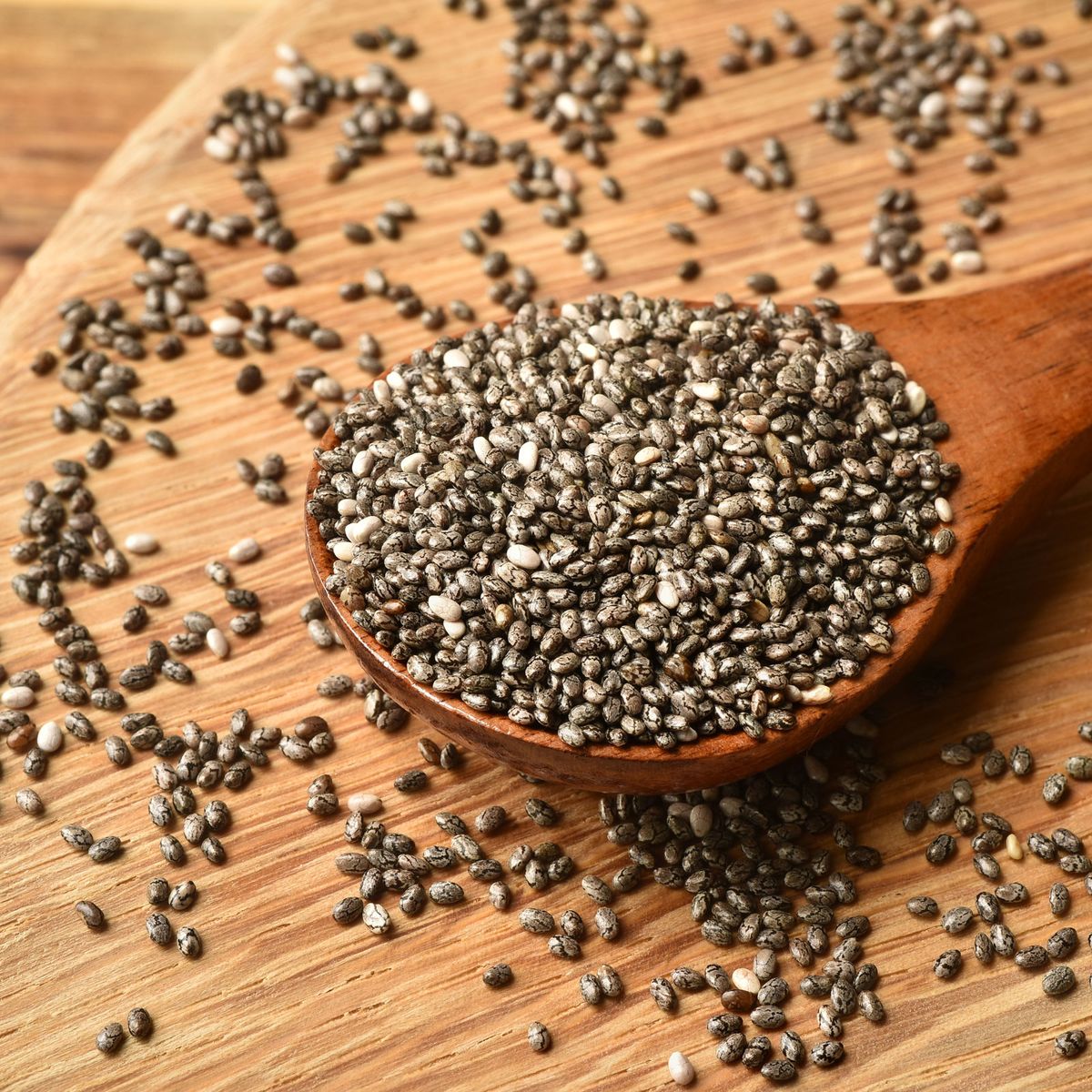Tropical garden croton, Codiaeum variegatum, is a striking foliage plant with bold, leathery leaves in shades of yellow, red, and green.
Variegation creates a dazzling array of contrasting speckles, blotches, and veining for a unique and showy display.

We link to vendors to help you find relevant products. If you buy from one of our links, we may earn a commission.
In our croton growing guide, we discuss how to care for plants. And our guide to croton leaf drop addresses the species’ tendency to shed leaves under stress.
This article zeroes in on what causes croton foliage to fade and how to avoid it.
Here’s what we’ll cover:
C. variegatum prefers consistent moisture, good drainage, protection from intense sunlight, and stability. Without a healthy environment, the foliar display is likely to be less than spectacular.
Let’s look at five reasons why colors that should be bold and bright may turn pale and lackluster.
1. Direct Sunlight
Crotons are native to the rainforests of Australia and Southeast Asia. Outdoors, they thrive in partial shade. As houseplants, they need bright, indirect sunlight.
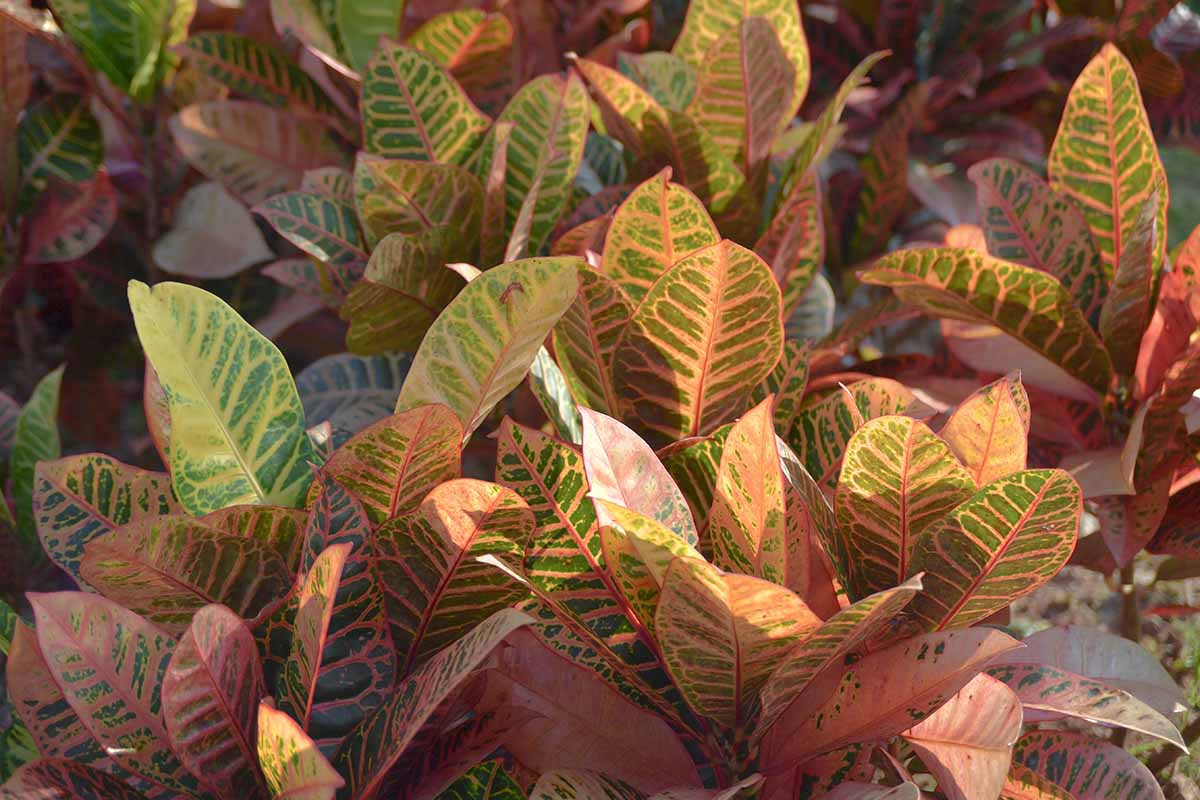
The best place for an indoor plant is three to five feet from a south- or west-facing window.
This proximity provides insulation from fall and winter drafts and protection from the magnification of the sun’s rays through window glass.
If you grow a croton outside in full sun, or put an indoor pot too close to a sunny window, the foliage may be overexposed to sunlight.
The resulting chemical reaction produces a carotenoid called zeaxanthin that impairs photosynthesis and chlorophyll production.
When direct sunlight combines with heat and dry soil, leaf fading may advance to browning and desiccation.
Overexposure is the most common cause of dull leaf color. It is easily avoided by planting in outdoor locations with afternoon shade and placing houseplants at least three feet from a sunny window. We’ll discuss temperature and moisture shortly.
And while we’re on the topic of exposure, underexposure can produce its own type of color loss.
A plant in a dim setting is likely to have green foliage with little to no variegation. The use of a grow light can restore the striking diversity for which the species is prized.
In addition, dim placements are more likely to promote fungal disease as we’ll discuss next.
2. Disease
Diseases common to C. variegatum include anthracnose and powdery mildew.
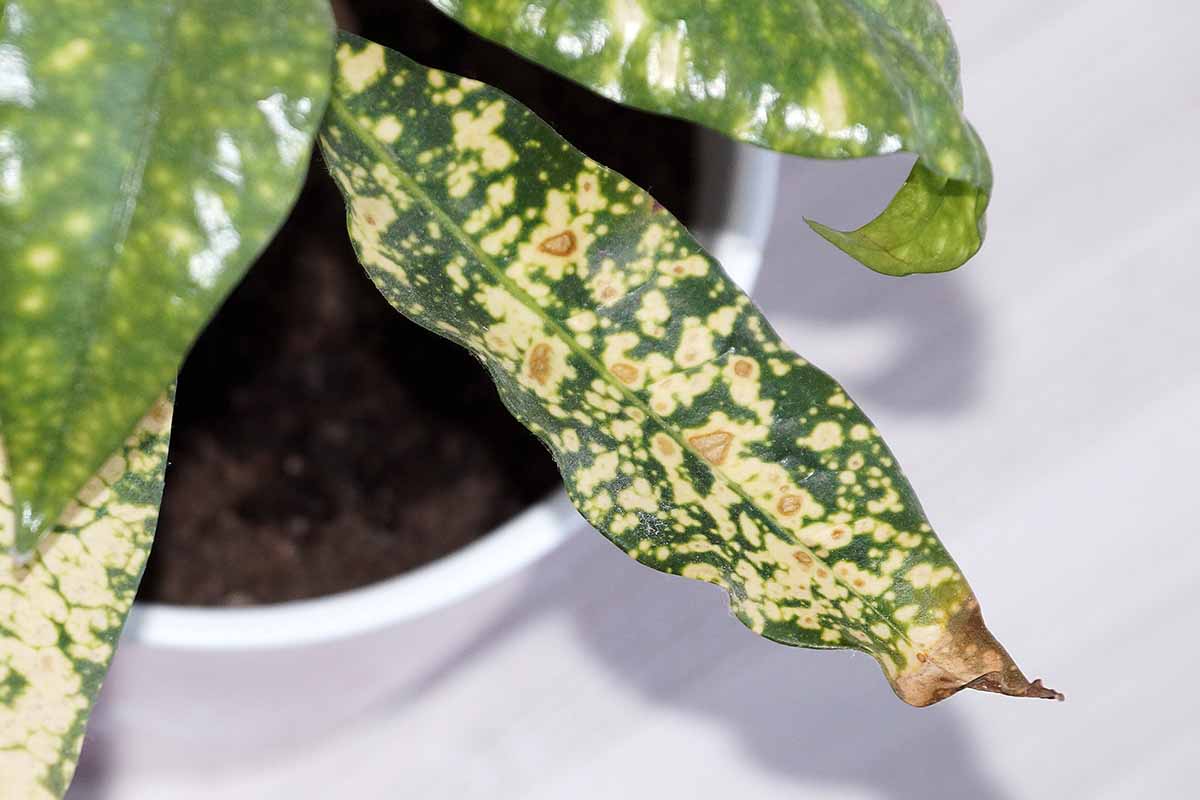
Anthracnose may appear as water-soaked blemishes that turn tan as plant tissue dies.
A case of powdery mildew can cause foliar disfigurement and defoliation. As plant tissue dies, the leaves turn yellowish and shade to brown as they dry.
In both cases, the best avoidance measure is keeping the foliage and soil from being too wet.
The ideal humidity range for crotons is between 77 and 88 percent with temperatures between 60 and 85°F.
The combination of a poorly draining container, excess moisture, low light, and cold temperatures is likely to promote fungal growth.
For best results, use a well-draining pot, water when the top half-inch to an inch of the soil is dry, place in bright indirect sunlight, and provide a temperate setting. Water only at the soil line, and avoid sprinkling the leaves and stems.
To treat a fungal condition, you can use neem oil. This is a vegetable-based natural fungicide and pesticide with a garlic-like smell.
If you prefer a product that doesn’t smell like garlic, here’s one to try.
Earth’s Ally 3-In-1 Plant Spray for Organic Gardening is a fungicide, insecticide, and miticide suitable for indoor use on common houseplant pests.
It contains clove, peppermint, and rosemary oils.

Earth’s Ally 3-in-1 Plant Spray
It’s available via Amazon. Choose an eight- or 32-ounce concentrate, or a 24- or 128-ounce ready-to-use bottle.
3. Moisture Stress
As a tropical species, croton prefers consistent moisture in the air and soil. Without it, the foliage may shade to paler versions of normally bold hues.
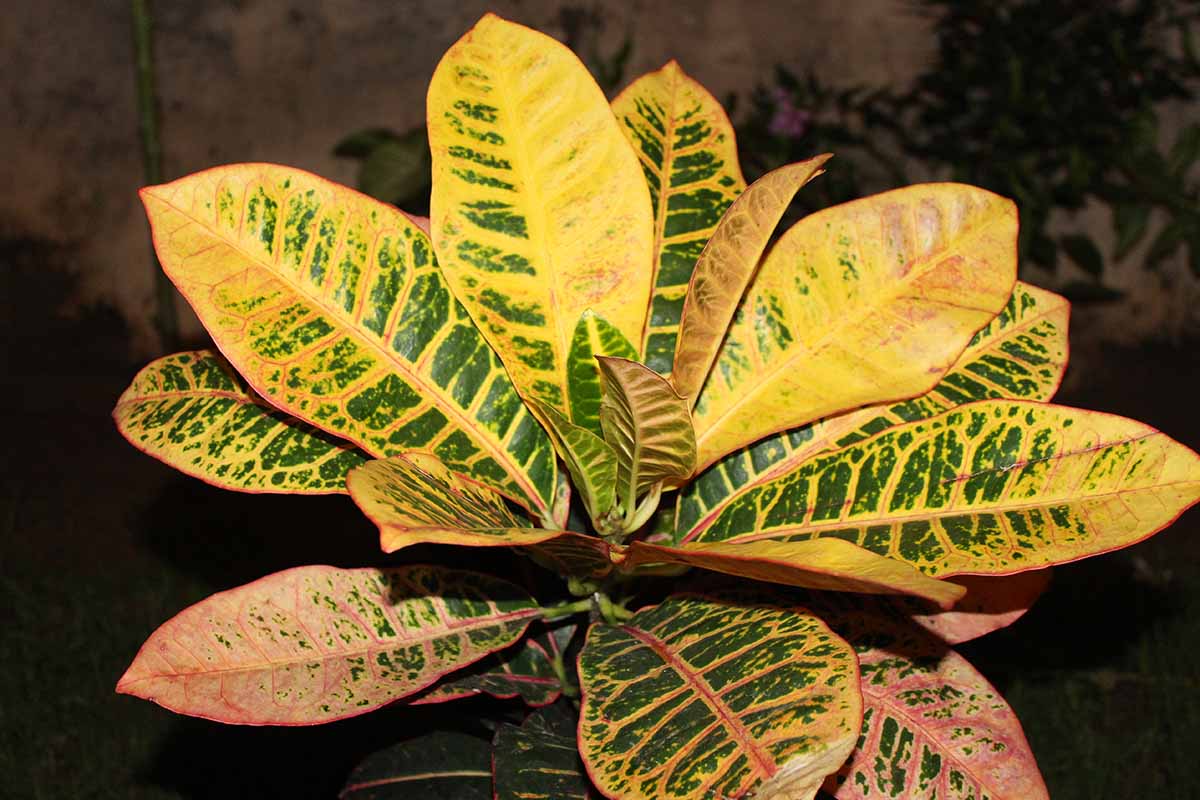
Undersaturation may also cause leaf yellowing, and when combined with heat stress, the edges may shade to tan, curling as they dry out.
Excess moisture may also result in yellow foliage, especially when a poorly draining pot inhibits root function.
To maintain healthy, colorful foliage, water when the top half-inch to an inch of the soil is dry. It’s helpful to use a moisture meter as a guide.
In addition, most homes have a humidity level in the 40 to 60 percent range. However, in its native habitat, the humidity ranges between 77 and 88 percent, as mentioned.
You can increase the ambient moisture by misting the foliage daily, but avoid this practice in low-light settings, as leaves that remain wet are prone to fungal disease.
Plants can also be clustered in groups to increase moisture, or you can run a humidifier in the room with your plants.
4. Pests
A well-tended croton that is neither under- nor overwatered is not going to be prone to pests, but an infestation is possible nonetheless, especially if a neighboring plant is affected.
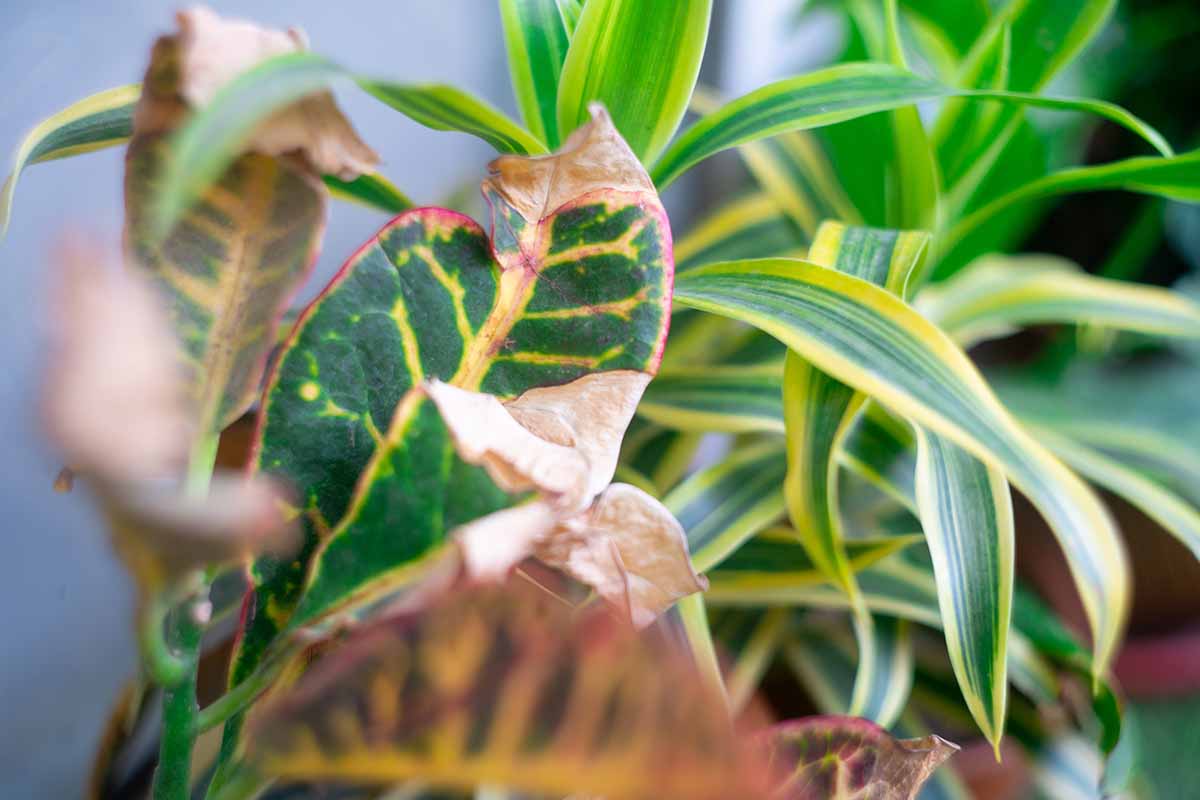
Some common sap-sucking species you may encounter are mealybugs, scale, and spider mites. When they feed, the leaves shade from yellow to tan as tissue dies.
If you notice eggs or insects on the top or underside of a leaf, you can snip it off and destroy it. Wear gloves to avoid handling the sap these plants exude, as it can cause skin irritation.
You can also try to dislodge any eggs or insects with a garden hose or kitchen sprayer.
If hand-picking and water spraying are unsuccessful, you can try neem oil or the Earth’s Ally product discussed in the disease section above.
It’s crucial to avoid an infestation, as pests may carry diseases that can also cause foliar deterioration.
5. Too Much Fertilizer
Feeding too often can inhibit water flow and turn the foliage yellow. The edges may shade to tan as the tissue dries up, causing wilting and eventual defoliation.
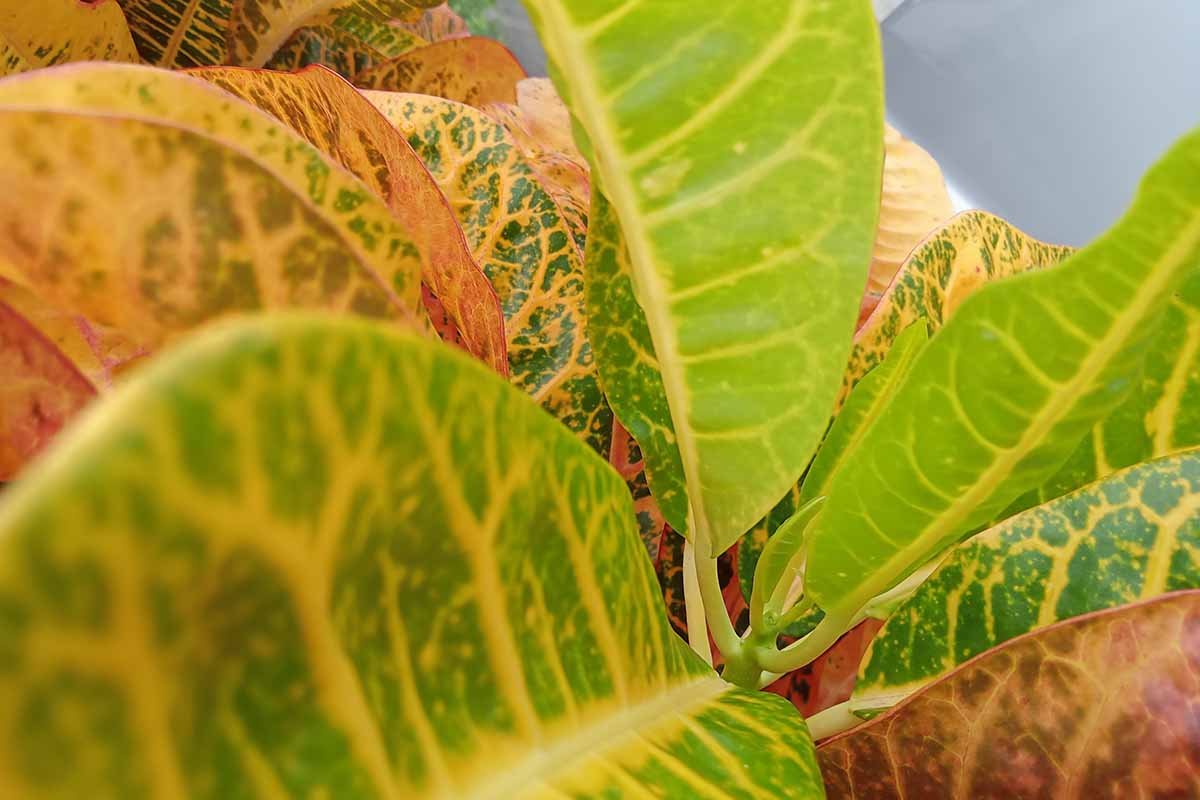
You may also notice a buildup of salts on the soil and inside the rim of the pot due to overfeeding.
Croton is not a heavy feeder. If you are cultivating yours indoors, a monthly dose of liquid houseplant food diluted to half strength and applied only during the spring and summer months is all you need to maintain optimal hues.
Colorful Once More
When you know the triggers of leaf fading, including disease, direct sunlight, moisture stress, pests, and too much fertilizer, you can do your best to avoid them.
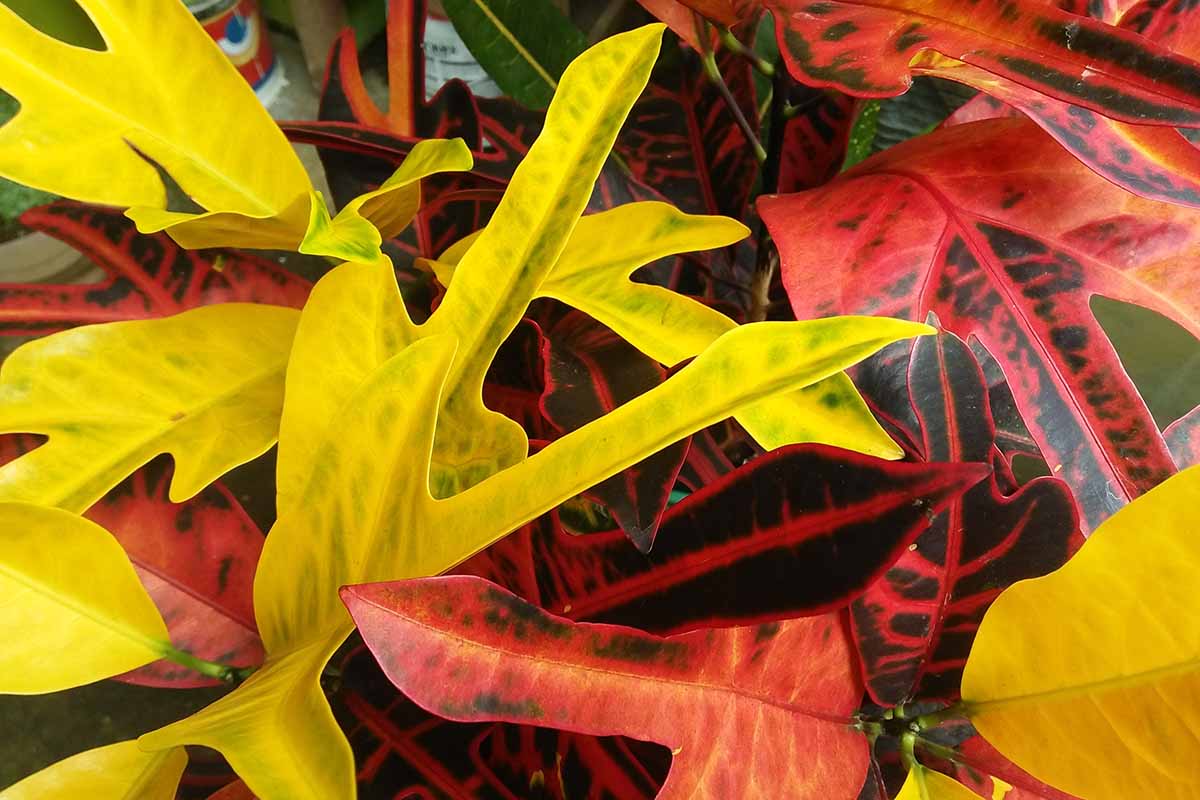
With best gardening practices, croton displays a glorious array of bold colors and contrasting variegation.
If you live in USDA Hardiness Zones 10 to 12, where it may be cultivated outdoors, it makes an eye-catching stand-alone specimen or robust informal hedge.
For those who live elsewhere, the lush tropical foliage makes a stunning and substantial houseplant.
Have you had problems with fading leaves on your croton plants? Let us know how you handled it in the comments section below.
If you found this discussion of croton color loss informative and want to read more houseplant troubleshooting guides, we recommend the following next:



